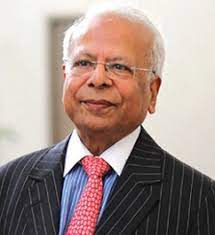The state of higher education
Pakistan has witnessed a significant expansion in the number of universities and tertiary enrolment since 2000. However, graduate unemployment remains high at around 30 percent. This suggests that the quality of graduate education is poor. Other measures, such as the quality of faculty research output, also support the impression that the huge investment in higher education over the past two decades has not led to high returns.
What accounts for this outcome? This question has been addressed both in scholarly articles as well in public discourse.[1] [2][3][4][5][6][7][8] The key issues for higher education institutions can be summarized as follows:
- Excessive bureaucratic control by the Higher Education Commission (HEC) with overlapping and competing jurisdictions of the federal and provincial government education departments
- Complex university governance structures with large senates and syndicates resulting in protracted and slow decision making
- Missing leadership qualities in the top management such as Vice Chancellors who are selected mainly on the basis of academic credentials rather than management ability
- Inadequate funding by the Government for public sector universities with restrictions on raising tuition fees and emphasis on brick and mortar (that is, buildings) rather than teaching capabilities, research and development
- Unaffordable fees charged by private sector universities and professional colleges whose owners are interested in maximizing profits
- Dearth of qualified teachers with a growing tendency for universities to hire their own graduates as faculty members without facing any competitive test
- Student intake is based on grades obtained at the Intermediate Board examinations that are mired in cheating, corruption and other malpractices
- Curricula and course contents are outdated; pedagogical tools and assessment methods promote rote learning; analytical and critical thinking are lacking
- Students are not provided opportunities to develop skills such as teamwork and collaboration, communication and inter-personal relationships
At the same time, some higher education institutions are very well-regarded and produce graduates who are in high demand both in Pakistan and abroad. This note considers how one such institution, the Institute of Business Administration, Karachi (IBA) has addressed some of the challenges noted above.
IBA was founded more than 70 years ago. Despite decades of political, economic, and social volatility, it has consistently maintained its reputation for excellence in education. The key factors behind this sustained quality performance include visionary and competent leadership, continuity of sound policies, adaptability to changing national and market conditions, and—most critically—autonomy coupled with accountability.
Governance
IBA’s governance model has been central to its success. The Institute is overseen by a Board of Governors (BOG), which includes distinguished professionals from diverse fields as well as accomplished educationists. The BOG is responsible for setting policies on faculty recruitment, academic programs, admissions, financial management, human resources, and technology. It also approves strategic plans and annual budgets, ensures audits, and monitors accountability. Specialized subcommittees support the BOG by conducting in-depth reviews of proposals. Statutory bodies such as the Academic Board and Selection Board further strengthen oversight.
Operational management is headed by an Executive Director (equivalent to a Vice Chancellor), supported by an Executive Committee, Deans Council, and various academic departments. Each school within IBA is led by a Dean, ensuring academic and administrative effectiveness.
To maintain transparency, IBA has developed a comprehensive Code Book that consolidates and updates academic, financial, HR, and examination rules. This structured approach has reinforced consistency and accountability across the institution.
Importantly, IBA deliberately chose not to transition into a full university. Such a move, it believed, would have diminished autonomy and introduced bureaucratic rigidity. Instead, the current governance structure has remained a pillar of its resilience and progress.
While most university vice chancellors in Pakistan come from purely academic backgrounds and often lack expertise in financial planning and resource management, IBA benefited from leaders with both academic and corporate experience. This combination significantly enhanced the quality of governance and decision-making.
Students
Admissions at IBA are strictly merit-based, transparent, and free from quotas or discretionary seats. The process includes eligibility screening, written entry tests, group discussions, and interviews. This rigorous system ensures that only the most capable candidates are admitted.
A needs-blind admissions policy guarantees financial assistance for students from disadvantaged backgrounds. Nearly 35% of IBA students receive some form of financial support. The Talent Hunt Program further widens access by identifying high-potential students from remote and underdeveloped areas. Selected students receive academic preparation through summer sessions and, upon admission, are funded for the duration of their degree.
Teaching methods are diverse, ranging from lectures and discussions to assignments, quizzes, and case-based learning. Assessment is continuous, incorporating quizzes, mid-terms, term papers, assignments, and final exams. MBA students must pass comprehensive exams, while undergraduate students complete a capstone course or thesis in their final year.
Beyond academics, students actively engage in co-curricular and extracurricular activities. Societies and clubs organize events that build skills in teamwork, event management, planning, fundraising, and leadership.
A defining characteristic of IBA since its inception has been its emphasis on discipline, punctuality, and time management. Classes begin on schedule, examinations are held according to pre-announced dates, and degrees are conferred without delay. Alumni consistently cite these habits as invaluable in shaping their professional careers.
Experiential Learning
Employer feedback once revealed that although IBA graduates possessed strong theoretical knowledge, they often struggled to apply it to real-world problems. To address this gap, IBA introduced the Experiential Learning Program (ELP). Under this initiative, final-year students work with partner companies to tackle strategic, operational, or future-focused challenges. This arrangement benefits both students and employers: students gain hands-on problem-solving experience, while companies observe potential hires over an extended period rather than relying solely on short interviews.
In addition to ELP, students complete mandatory summer internships with corporate organizations. Another innovative initiative, the Social Responsibility Initiative (SRI), requires students to work for six weeks with NGOs or community-based organizations serving underprivileged populations. This instills empathy, compassion, and a commitment to social causes.
IBA also provides opportunities for international exposure. Through exchange programs with universities such as Tsinghua (China) and ISB (India), as well as donor-funded initiatives like those sponsored by the U.S. government, students broaden their perspectives, network globally, and enhance cross-cultural understanding.
Comprehensive student support is provided by the Office of Student Affairs and the Student Development Program (SDP), which pair students with faculty advisors for guidance. Mentoring from alumni, CEOs, and senior executives further helps students set and achieve career goals. The Career Development Centre plays a vital role in job placement, organizing on-campus recruitment drives, job fairs, and HR forums to connect graduates with prospective employers.
Faculty
Faculty recruitment is transparent, rigorous, and multi-layered. Candidates meeting eligibility criteria deliver a presentation before departmental faculty, who submit evaluation forms electronically. Those with strong recommendations proceed to interviews with the ED. Final selection is made by the Selection Board (SB), comprising HR experts, alumni, and educationists. SB recommendations are ratified by the BOG, ensuring robust accountability. Industry practitioners are engaged as visiting faculty, enriching students’ learning with practical insights.
Faculty evaluation is managed through a calibrated annual performance system. A committee of Deans and department heads evaluates faculty against pre-assigned criteria: Teaching Quality (student evaluations), Research Performance (publications), and Service to the Institute. A bell-curve rating system categorizes performance into Excellent (top 5%), Very Good (20%), Good (50%), Needs Improvement (20%), and Unsatisfactory (5%). Annual increments are tied directly to these performance ratings.
IBA extends strong support for faculty development. Teachers are funded to attend international conferences, seminars, and training workshops. Beyond teaching, faculty actively contribute to institutional governance through academic committees, boards of studies, student societies, hostel management, and other forums.
IBA also undertook special efforts to support and retain good faculty. First, recognizing that many young female faculty members (and some male colleagues) were unable to spend four years abroad due to family commitments, IBA negotiated split-PhD programs with universities in the UK and France with reduced overseas-stay requirements. This arrangement proved successful: all participants completed their doctoral degrees and were retained as full-time faculty.
Second, IBA expanded its recruitment outreach to universities in the US, UK, Canada, and Europe. Several fresh PhDs of Pakistani origin were persuaded to return and join IBA. Third, the HEC Faculty Development Program was leveraged to finance younger faculty members for advanced degrees abroad. As a result, the number of PhDs on IBA’s faculty has grown six-fold since 2008, now exceeding 100. Junior lecturers and teaching fellows are also encouraged and supported in pursuing advanced degrees internationally.
Technology Upgradation
IBA has significantly modernized its learning environment through sustained investment in technology. Its two campuses are equipped with broadband connectivity, multimedia classrooms, and access to world-class digital databases. These resources have created a more interactive and technology-driven academic experience for students and faculty alike.
Academic and operational management is facilitated by a modern IT backbone featuring state-of-the-art hardware and software such as Enterprise Resource Planning and a Learning Management System. Additionally, video conferencing services support virtual meetings, online workshops, distance learning, webinars, and guest lectures by international experts. These advancements have streamlined administrative functions and enriched the learning experience at IBA.
Physical Infrastructure
By 2008, IBA was struggling with severe infrastructure shortages. The facilities built in the late 1960s for 200 students and a small faculty could no longer support an enrollment that had grown tenfold. The institute lacked sufficient classrooms, computer labs, hostels, and administrative offices. Spaces for discussions, events, and sports—both indoor and outdoor—were almost nonexistent. Faculty members had no private offices and shared cramped common rooms, making it difficult to attract and retain highly qualified teachers. Auditoriums and libraries were in poor condition, falling far short of what is expected from a top-tier university.
IBA turned to philanthropists, the corporate sector, and high-net-worth individuals for support. The response was overwhelmingly positive, and within eight years, IBA raised Rs. 5 billion (US$50 million)—the largest sum ever mobilized by a public sector university in Pakistan. As a result, IBA more than doubled the physical space available for teaching and learning after 2008. This transformation has allowed it to accommodate nearly 5,000 students and more than 120 full-time faculty members.
The centerpiece of this development is a state-of-the-art library at the main campus, complemented by a satellite library at the city campus. These libraries provide a contemporary learning environment with collaborative spaces, individual study areas, multimedia facilities, research nooks, and leisure study corners. They also offer access to over 10,000 e-journals and 125,000 e-books, ensuring that students and faculty have the resources required for world-class research and learning.
New Programs and Quality Accreditation
As demand for quality education expanded beyond business and computer sciences, IBA began transforming into a more comprehensive institution. This diversification has not only supported financial sustainability but also addressed critical gaps in Pakistan’s job market.
With guidance from the Institute of Chartered Accountants of Pakistan, IBA launched the BS in Accounting and Finance, which integrates courses aligned with professional CA requirements. Graduates benefit from both a recognized university degree and partial professional accreditation, improving their career prospects.
Recognizing the absence of strong liberal arts and social sciences programs in Pakistan, IBA expanded in these fields by recruiting faculty with PhDs from top international universities. Today, the Department of Social Sciences and Liberal Arts boasts more than 40 full-time faculty members, about half of whom hold foreign PhDs, while several others have advanced degrees from institutions such as Harvard, Chicago, and Columbia. Despite initial skepticism, graduates of these programs have successfully secured positions aligned with their interests and qualifications.
IBA’s commitment to international standards has been validated by prestigious accreditations. It received South Asia Quality Assurance System (SAQS) recognition from AMDISA and later, its School of Business Studies, achieved the globally respected AACSB accreditation after upgrading its MBA and BBA programs to comply with rigorous requirements.
Financial Sustainability
One of the most pressing challenges facing higher education in Pakistan is the weak financial health of universities. While the number of universities has grown to over 215, government funding has not kept pace. Most universities remain heavily dependent on government grants and struggle to generate their own revenues.
Many vice chancellors judge their performance by the number of new departments, centers, or buildings established, without considering the long-term costs of staffing, operations, and maintenance. As a result, institutions often run overdrafts to cover even basic expenses such as salaries. Administrative structures are also inefficient, with disproportionate growth in non-academic staff inflating wage and pension bills.
IBA has taken a different path by focusing on financial self-reliance. Though enrollment has grown over the years, expenses are largely met from tuition. Additional streams include profit contributions from IBA’s centers, income from the Endowment Fund, alumni donations, scholarships funded by philanthropists, and Qarz-e-Hasna financing from Islamic banks. Today, approximately 75% of IBA’s revenues are internally generated.
Importantly, IBA pays its faculty market-based salaries, independent of government pay scales, helping attract and retain top talent. Meanwhile, non-academic staff numbers have decreased as services such as janitorial, security, and HVAC have been outsourced through open, competitive bidding. This approach has created both efficiencies and cost savings, strengthening the institution’s long-term financial resilience.
Values and Ethics
From its inception, IBA has placed strong emphasis on instilling values and ethical conduct among its students. The institution has consistently upheld a policy of zero tolerance toward plagiarism, cheating, misrepresentation, favoritism, and any deviation from rules. This uncompromising stance has shaped a culture of integrity and accountability. At a time when ethical standards are rapidly eroding, IBA sees it as a central responsibility to nurture integrity and ethical judgment among its students. By doing so, it aims to prepare future leaders who can navigate challenges with fairness, responsibility, and resilience.
Feedback from employers of IBA graduates consistently highlights that they possess academic competence as well as high ethical standards and leadership qualities. Many IBA alumni have risen to become CEOs or senior executives, with employers citing their adherence to values as a key differentiator.
IBA’s success lies in its strong governance, academic meritocracy, faculty development, financial sustainability, and emphasis on values. Its model demonstrates that autonomy, accountability, visionary leadership, and community engagement are vital for transforming higher education institutions in Pakistan.
[1] Aslam, S et al (2024) The Quality Education Challenges of Higher Education in Pakistan for socio economic development, Pakistan Journal of Social Sciences Vol 3 Issue 2
[2] CBER (2024) Evolving Landscape of Higher Education in Pakistan : Policy Brief
[3] Hoodbhoy, P. (2009) Pakistan’s higher education system: what went wrong and how to fix it? Pakistan Development Review Winter
[4] Meer, A. (2023) The Challenge facing Pakistan’s Higher Education system British Council Pakistan
[5] Pakistan Lawyer (2024) Pakistan’s Higher Education Sector: Challenges and Prospects
[6][6] Scribd.com Higher Education in Pakistan: Ills and remedies
[7] Waheed, D. (2024) Faults in the Higher Education system of Pakistan; Paradigm shift
[8] Zia, T. et al (2023) Higher Education Policy in Pakistan, Challenges and opportunities in Global context; Research Volume 8 Issue 2 April-June





